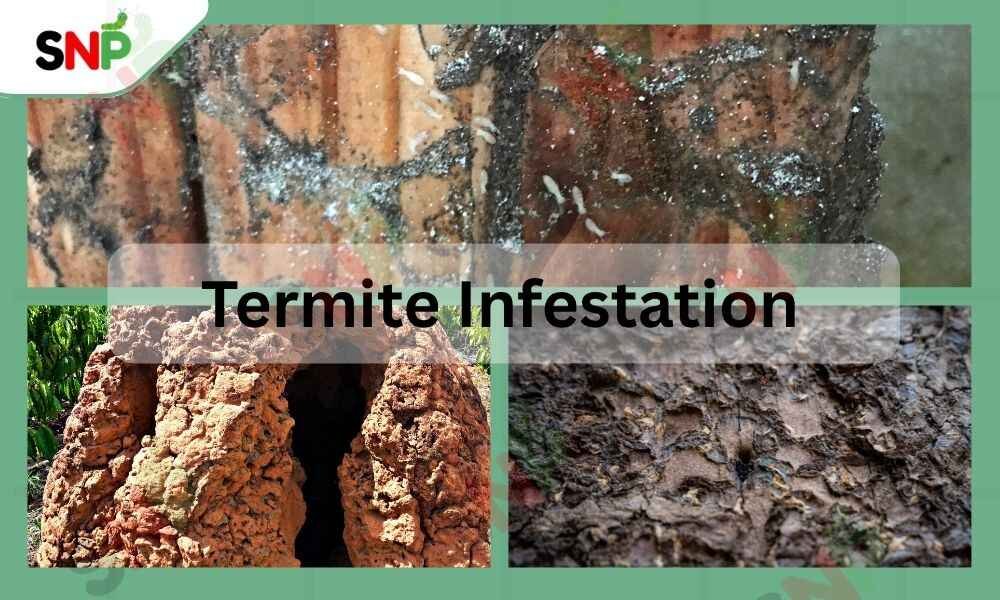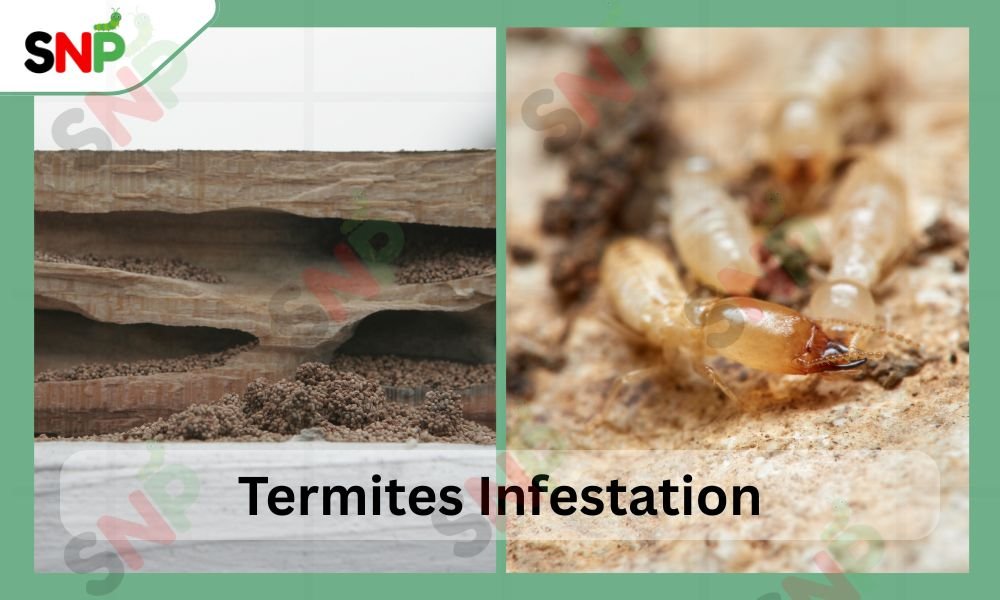There are few dangers of having a termite infestation in your home that are so insidious and worrisome as they can easily be. These small insects live secretly hiding behind walls, underneath floors, and within wooden structures and in most cases they may end up costing homeowners thousands of dollars and they are hardly noticeable when homeowners are still experiencing problems. Every property owner in the United States should learn about the symptoms of invasion of termites and ways to deal with infestations.
What Is a Termite Infestation?
A termite infestation is the presence of a termite colony which has found and colonized a building, usually a residential one. Termites are a very different category from other pests that can deceive a human quite easily and are notorious for their secretive behavior. Here they mostly consume cellulose that is found in wood, paper, and cardboard. In nature, these insects are the ecological waste management crew, however, when they come to our homes, they take a very short time to run out of nature’s charity and become a menace to the homeowner’s.

Termite damage is on an epic scale. Approximately 600,000 homes in the U.S. are damage by termites each year, and the average cost to prevent and repair these damages is five billion dollars. The stealthy nature of termites is that they are almost undetectable and can stay in your home feeding for quite a long time while extending their hideout and their feeding area significantly without being notice.
Signs of Termites: Early Detection Saves Thousands
Early detection of termite activity can be the difference between some repairs and serious structural damage. These are the critical warning signs that each homeowner ought to look out for:
Termite Swarmers and Discarded Wings
One of the most obvious signs of termites is when you see winge ones, which is call swarmers or alates. Reproductive termites come out of mature colonies during certain seasons, usually in spring after the last winter freeze when the temperature gets to the low 70s range. Swarmers have been spot most times after a light rain and thus they generally come out in the early afternoon.
After the flight, these termites become wingless, and the discarde wings can found in the vicinity of windowsills, doors, and other entry points. They also feature very much the same shape and size as a fish scale and constitute the very first obvious signs of termite activity. The presence of swarmers in your house is not only a definite indication of a termite infestation but also is a call for immediate professional intervention.
Mud Tubes: Termite Highways
Subterranean termites make mud tubes along foundations, walls, and other surfaces to move from their underground colonies to the locations where they get their food. These tunnels are construct by termites with the help of soil, wooden pieces, and their saliva through which termites make pencil-sized tunnels. The most sure-fire evidence of termites is the mud tube and it also marks a living, healthy infestation.
Although the mud tubes may appear dry or abandoned, they do not represent evidence that termite activity does not take place. Apart from that, it is quite probable that termites will make new tunnels out of old ones or use the old ones. Upon noticing mud tubes around your home’s foundation, in crawl spaces, or along the wooden structures, reach out to a pest control professional immediately.
Hollow-Sounding Wood
If the termites happen to be the ones who dismantle the wood, they will go through the wood to consume it from the inside, thus the outer surface may still be intact, but there will be hollow cavities inside. The wood will carry a particular hollow sound if you hit i,t which is the same effect cause by the issue of the wood that has eaten by termites. Professional inspectors usually perform this “sounding” method as part of their process of locating hidden termite damage.
The wood that sounds hollow can be the one in the floors, walls, baseboards, and other wooden structures. This sign most probably indicates a termite infestation that has deepened into the place; thus, it takes some time for termites to produce significant internal damage.
Termite Frass (Droppings)
Drywood termites have a very strange way of communicating, writing, and giving. Because of this, they produce one-of-a-kind droppings called frass. Frass is uniform-sized, six-sided pellets. These tiny oval-shape pellets are about 0.04 inches in length and are color due to the wood that was eaten. The frass is similar to sawdust, coffee grounds, or little piles of black pepper in appearance.
Besides being seen in the air, dust can also settle in certain places. Dust can fall on the floor, kitchen counter, or in places where there is furniture or wood, and it can be very noticeable, as in some places the dust piled up. Dust can be a sign of termite activity. The fact that frass is available means that the termites are their food and thus are their waste.
Structural Changes and Damage
Termites might have caused structural changes in your house.
- Floors that are warpe or have blisters: Termites that live underground can damage subflooring, thus resulting in the floor surfaces being change visually
- Drooping floors or ceilings: A situation that has gone too far with a group of termites may result in loss of structural integrity to the house
- Noisy floors: Floor supports become weaker due to the damage of termites, thus they become more sensitive to movement, which results in increased squeaking
- Paint that is bubbling or coming off: The paint can blister and bubble due to moisture that is create by the activities of termites, thus it looks like water damage

When Termites Are Most Active
Knowing termite patterns of activity will help homeowners plan their antitermite strategy accordingly. Although the termites are always active throughout the year, their work/species energizing is more customized to certain seasons.
The time for swarming of the insects in spring is most of the time the period when the activity of termites is most pronounced and becomes most obvious to the homeowners. The winged reproductive termites usually come out after the last winter freeze when the temperature is consistently in the low to mid-70s range. In the places that are warmer, such as Florida and Georgia, the start of the swarming can be as early as February.
Peak activity of most of the species of termites occurs during the summer period, which is due to the hot weather and the availability of food being increase. The times in the summer when the homeowners are busy with their construction or landscaping projects, it will be easy for the termites to find new food sources.
As it gets colder during the fall, some species of termites decide to move to other places in search of a better environment, which is called a migration period, and therefore this period can convert the new areas, which were previously affect by the pests, into places where they infest.
The Importance of Professional Inspection
If the professional termite inspection is done, only then can accurate identification and assessment of the situation of the infestation of termites achieve. A professional inspector will look at the whole house, both the interior and the outside places where there might be signs of termites such as mud tubes, wood that is damaged, and places that are suitable for them to live in.
The inspectors employ special instruments, which include moisture meters, infrared cameras, and probing tools, to reach out to hidden places and thus uncover termite activities that are not easily visible to them. They further go on to identify those places that can easily infested in the future due to some conditions, such as the presence of moisture or areas where wood and soil are in contact.
Don’t Wait: Take Action Today
A termite infestation certainly is not going away by itself. These tireless creatures are incomparable to robots operating 24/7 and 7 days a week, and thus, it can only imply that they are wreaking havoc on the integrity of your house. The longer you take to treat the termite infestation, the more damage will continue spreading, and fixing the damaged area will also keep on increasing its costs.
If such an incident of termite infestation occurs in your home, it is of crucial importance that you seek the assistance of a professional pest control service without wasting time. Detecting and treating the problem at the early stages can not only save your wallet but also keep your house structurally protected. It goes without saying that with termite prevention and early intervention, the cost will be much less than fixing the damage caused by them later.
